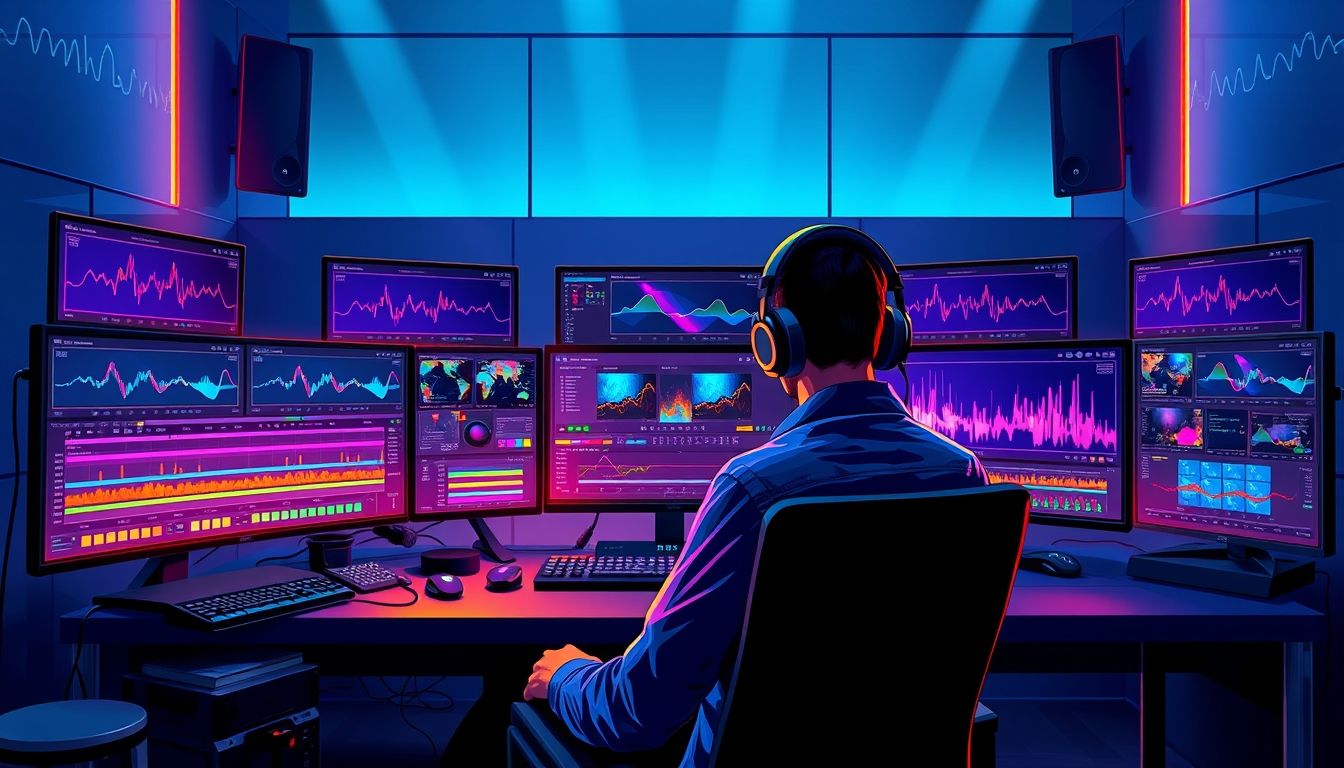Video Editing and Montage: A Comprehensive Guide to Earning Income and Professional Success
In our digital age, video has become an essential medium for communication, marketing, and entertainment. As a result, the demand for video editing and montage professionals has increased significantly. Whether you're looking for a full-time job, freelance work, or even a way to earn extra income, mastering this skill can open up a wide range of opportunities.
Chapter 1: Why are Video Editing and Montage Important?
Video is king. This phrase is not just a slogan, but a reality. Companies, brands, and even individuals rely on video to connect with their audience, promote their products, and share their stories. Here are some reasons why video editing and montage are so important:
- Increased Engagement: Video attracts and maintains attention better than text or static images.
- Improved Marketing: Effective marketing videos can significantly increase sales and brand awareness.
- Simplified Information: Video can explain complex concepts in an easy and simplified way.
- Building Trust: Personal videos can help build trust between you and your audience.
Chapter 2: Essential Skills for Video Editing and Montage
To become a professional in video editing and montage, you need to master a set of essential skills, including:
- Software Proficiency: Mastering editing software such as Adobe Premiere Pro, Final Cut Pro, or DaVinci Resolve.
- Cutting and Merging: The ability to cut and trim video, and seamlessly merge different clips.
- Color Correction: Adjusting colors and lighting to improve video quality.
- Adding Effects: Using visual and audio effects to create compelling visuals.
- Text Overlays: Adding text and illustrations.
- Sound Design: Editing audio and adding music and sound effects.
Example: Let's say you are editing a promotional video for a new product. You should be able to cut the clips that best showcase the product, merge them with attractive background footage, correct the colors to make the product look its best, add visual effects to increase excitement, and write explanatory texts that highlight the product's features. In addition, you should choose appropriate background music that creates the right atmosphere and enhances the video's impact.
Chapter 3: Necessary Tools and Equipment
In addition to skills, you also need the right tools and equipment. Here is a list of the most important tools you need:
- Powerful Computer: With a powerful processor, large RAM, and dedicated graphics card.
- Editing Software: Choose the software that suits your needs and budget.
- High-Resolution Display: To see the fine details of the video.
- Professional Headphones: To hear the sound clearly.
- Microphone (Optional): To record high-quality audio.
- External Storage Device: To store large video files.
Chapter 4: Resources for Learning Video Editing and Montage
There are many resources available for learning video editing and montage, including:
- Online Training Courses: Platforms like Udemy, Coursera, Skillshare offer comprehensive training courses.
- YouTube: There are many educational channels that offer free tutorials.
- Books and Articles: There are many books and articles that cover different aspects of video editing and montage.
- Workshops and In-Person Training Courses: Provide an opportunity to interact directly with instructors and other trainees.
Tip: Start by learning the basics, then move on to more advanced techniques. Practice regularly and apply what you have learned to real projects.
Chapter 5: Building a Strong Portfolio
A portfolio is the key to success in the field of video editing and montage. Your portfolio should showcase your best work and highlight your skills and abilities. Here are some tips for building a strong portfolio:
- Choose Your Best Work: Do not add everything you have done, but only choose the work you are proud of.
- Diversify Your Work: Showcase a variety of projects, such as promotional videos, short films, and music videos.
- Update Your Portfolio Regularly: Add new work and remove old work.
- Make Your Portfolio Easy to Navigate: Use a simple and user-friendly design.
- Promote Your Portfolio: Share your portfolio on social media, job boards, and freelance websites.
Chapter 6: Strategies for Earning Income from Video Editing and Montage
There are many ways to earn income from video editing and montage, including:
- Freelancing: Providing video editing and montage services to independent clients.
- Full-Time Jobs: Working in production companies, marketing agencies, or media organizations.
- Creating and Selling Online Training Courses: Teaching others video editing and montage skills.
- Creating a YouTube Channel: Creating engaging video content and earning income from advertising.
- Selling Templates and Effects: Creating video templates and effects and selling them online.
Statistics: Statistics indicate that the average income of a freelance video editor in the United States ranges from $50,000 to $80,000 per year. However, editors with experience and high skills can earn significantly more.
Chapter 7: Marketing Yourself as a Video Editor
To succeed in the field of video editing and montage, you must be able to market yourself effectively. Here are some tips:
- Create a Professional Website: Showcasing your skills, experience, and portfolio.
- Use Social Media: To connect with potential clients and share your work.
- Participate in Online Communities: To connect with other video editing and montage professionals.
- Ask for Recommendations: From previous clients.
- Offer Deals and Discounts: To attract new clients.
Chapter 8: Challenges of Video Editing and Montage and How to Overcome Them
The field of video editing and montage is full of challenges, but with perseverance and continuous learning, you can overcome them. Here are some common challenges and how to deal with them:
- Tight Deadlines: Learn how to manage your time and prioritize tasks.
- Changing Client Requirements: Be flexible and willing to adjust your work according to client requirements.
- Intense Competition: Continuously develop your skills and provide high-quality services.
- Technical Problems: Be aware of the latest technologies and try to solve problems yourself.
Chapter 9: The Future of Video Editing and Montage
The future of video editing and montage looks very promising. As the use of video continues to grow in all aspects of our lives, the demand for video editing and montage professionals will increase. In addition, new and innovative technologies will emerge that will change the way we work, such as:
- Virtual Reality and Augmented Reality: Will create new opportunities to create interactive and immersive video content.
- Artificial Intelligence: Will help automate some routine tasks, allowing editors to focus on creative aspects.
- 3D Video: Will become more common, requiring new skills in montage and editing.
Chapter 10: Additional Tips for Success
Here are some additional tips to help you succeed in the field of video editing and montage:
- Be Passionate About What You Do: Passion is the primary driver of success.
- Be Creative: Don't be afraid to try new things and develop your own style.
- Be Committed: Work hard and maintain the quality of your work.
- Be a Lifelong Learner: Continue to learn new skills and keep up with the latest technologies.
- Be Patient: Success takes time and effort.
"Success is the sum of small efforts, repeated day in and day out." - Robert Collier




